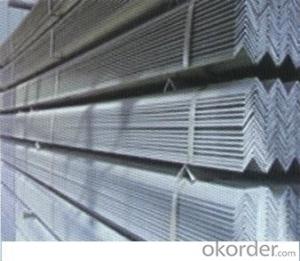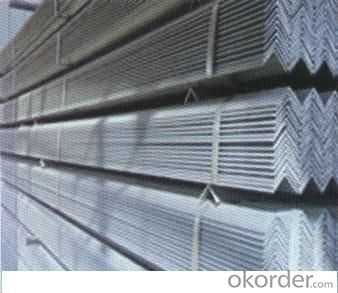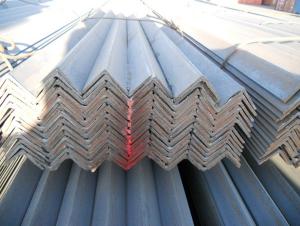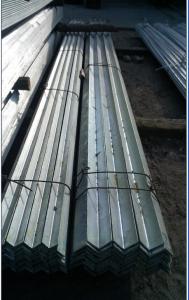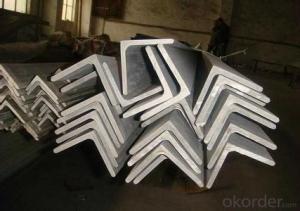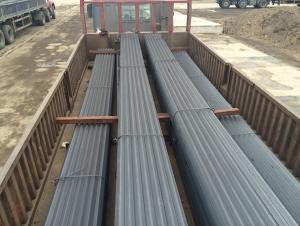GB Q235B galvanized angle steel for construction
- Loading Port:
- Tianjin
- Payment Terms:
- TT OR LC
- Min Order Qty:
- 25 m.t.
- Supply Capability:
- 10000 m.t./month
OKorder Service Pledge
OKorder Financial Service
You Might Also Like
Product Description:
ASTM 316l Stainless Angle Steel Bar
1.Surface:Bright,Polished,Turn smooth(Peeled),Brush,Mill,Pickled
2.Length:3m, 6m,9m,12m
3.Use:These products are widely supplied to areas of machine-made industry,chemical industry,spin,shipping industry,architecture,food industry,household products etc
4 ISO9001:2008
SPECIFICATION
Standard | AISI, ASTM, BS, DIN, GB, JIS, etc |
Grade | Q195, Q215, Q235, Q345, SS400, A36, S235JR, ST37, etc |
Technical parameters:
1) Material: Q235B , Q 345B, SS400 ,SS540, S235JR ,ETC. | |||
| 2) Usage: structure construction and electronic tower building | |||
| 3) Weight tolarance: -4% TO -10% | |||
| 4) Size tolarance : | |||
| ANGLE STEEL SIstructural steel angleE TOLARANCE (MM) | |||
| SIstructural steel angleE cm | WIDTH b/mm | THICKNESS d/mm | LENGTH /m |
| 2-5.6 | +/-0.8 | +/-0.4 | 4-12 |
| 6.3-9 | +/-1.2 | +/-0.6 | 4-12 |
| 10-14 | +/-1.8 | +/-0.7 | 4-12 |
| 16-20 | +/-2.5 | +/-1.0 | 4-12 |
| 5) Payment terms: TT or LC | |||
| 6) Delivery date: within 30 days after receiving the LC or TT prepay | |||
| 7) Packing: Export package | |||
| 8) Inspection: accept third party inspection | |||
Other Steel Bar Specification:
1.Square bar:Size: 4mm*4mm~100mm*100mm
2.Round Bar:Diameter: 3mm~800mm
3.Angel Bar:Size: 3mm*20mm*20mm~12mm*100mm*100mm
4.Flat bar:Thickness: 2mm~100mm,Width: 10mm~500mm,
5.Hexagonal :Size: 2mm~100mm
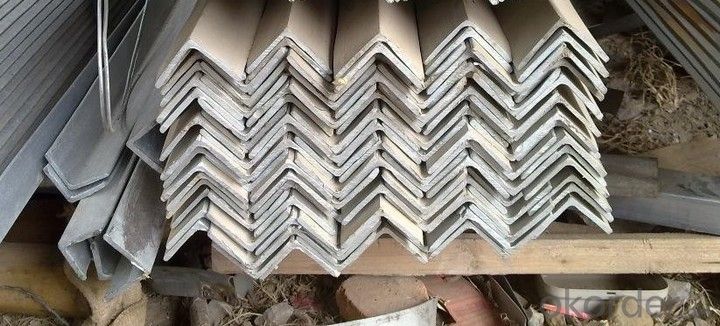
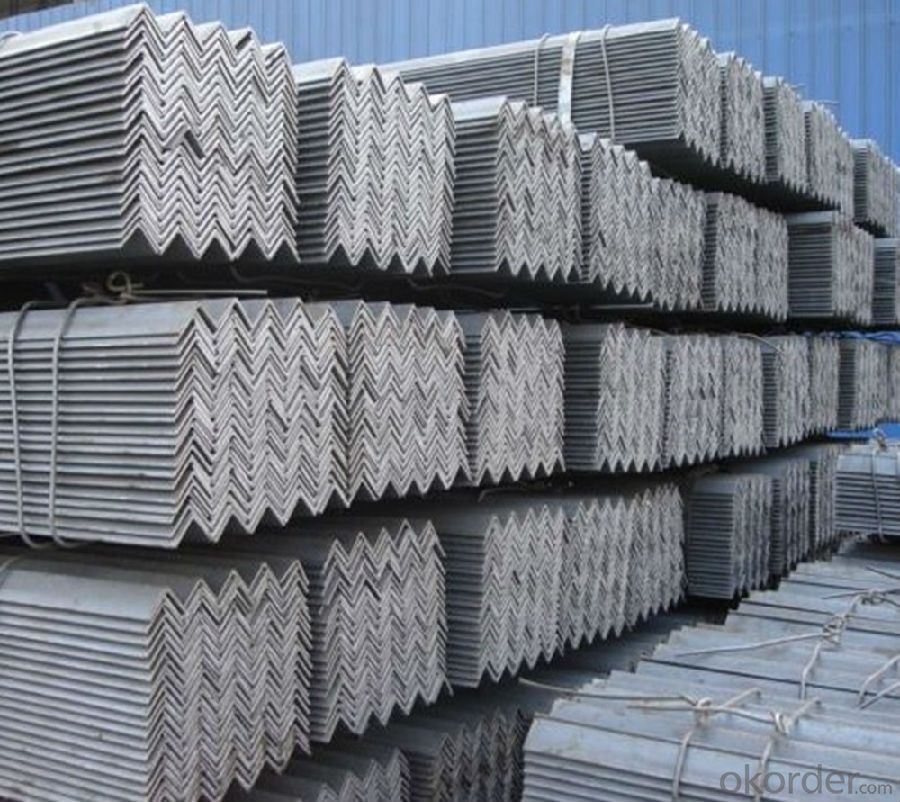
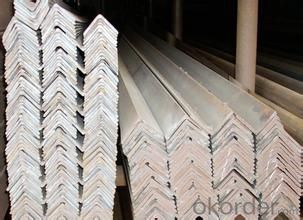
- Q: Are steel angles suitable for window frames?
- Yes, steel angles are suitable for window frames. Steel angles are often used in construction for their strength and durability, making them an ideal choice for supporting the weight of window frames. They provide excellent structural support, ensuring that the window frames remain stable and secure. Additionally, steel angles are resistant to corrosion, which is particularly advantageous for window frames that are exposed to external elements such as rain and humidity. Furthermore, steel angles can be easily fabricated and customized to meet specific design requirements, making them a versatile option for window frame construction. Overall, steel angles offer numerous benefits that make them a suitable choice for window frames in terms of strength, durability, corrosion resistance, and flexibility.
- Q: Can steel angles be used for storage racks?
- Certainly, storage racks can indeed be constructed using steel angles. Due to their exceptional strength and durability, steel angles find frequent usage within the construction industry. They possess the versatility to be effortlessly molded into numerous configurations, including those required for designing storage racks. These angles offer structural reinforcement and stability, rendering them an optimal choice for accommodating heavy items. Moreover, their resistance to corrosion becomes paramount in upholding the long-term robustness of the storage racks. All in all, steel angles serve as a dependable and widely employed material for fabricating storage racks.
- Q: Are steel angles suitable for earthquake-resistant construction?
- Indeed, earthquake-resistant construction can make use of steel angles. Steel, known for its strength and ductility, is an ideal material for withstanding seismic forces. Specifically, steel angles are commonly employed in seismic design and construction because of their ability to offer structural stability. Bracing elements in buildings often consist of steel angles, which help withstand lateral forces resulting from earthquakes. These angles can be installed diagonally between structural members, creating a rigid frame capable of effectively absorbing and dissipating seismic energy. By distributing the forces generated during an earthquake, these angles play a crucial role in preventing structural collapse. Moreover, steel angles can be designed and fabricated to meet specific seismic design criteria. Engineers can consider factors such as the building's location, expected seismic activity, and desired level of earthquake resistance. By utilizing advanced computer-aided design and analysis tools, engineers can optimize the placement and size of steel angles, thereby enhancing the structure's overall seismic performance. Apart from their strength and ductility, steel angles offer other advantages for earthquake-resistant construction. They are lightweight, reducing the overall weight of the structure and enabling more efficient seismic design. Additionally, steel is a recyclable material, making it a sustainable choice for construction projects. However, it is important to note that the suitability of steel angles for earthquake-resistant construction relies on various factors, including the specific design, construction techniques, and adherence to building codes and regulations. Professional engineering expertise and thorough analysis are essential to ensure the appropriate utilization of steel angles in seismic design. In conclusion, steel angles are suitable for earthquake-resistant construction due to their strength, ductility, and ability to provide structural stability. When appropriately designed and installed, they can effectively resist seismic forces and contribute to the overall safety and resilience of the structure.
- Q: Are steel angles suitable for scaffolding?
- Yes, steel angles are suitable for scaffolding. They are commonly used in scaffolding systems due to their strength, durability, and ability to provide stable support for workers and materials. Steel angles offer excellent load-bearing capacity and can withstand heavy loads, making them a reliable choice for scaffolding structures.
- Q: How do you calculate the deflection of a steel angle under load?
- To calculate the deflection of a steel angle under load, you can use the principles of structural engineering and the concept of beam deflection. The deflection of a beam is the degree to which it bends or sags under an applied load. Firstly, you need to determine the properties of the steel angle, such as its cross-sectional area, moment of inertia, and modulus of elasticity. These properties can be obtained from the manufacturer's specifications or through testing. Next, you should determine the type of loading the steel angle will be subjected to, such as a uniformly distributed load or a concentrated load. The magnitude and distribution of the load will affect the deflection. Once you have the necessary information, you can use various equations and formulas to calculate the deflection. One commonly used equation is the Euler-Bernoulli beam equation, which relates the deflection of a beam to the applied load, its length, and the properties of the material. The equation for calculating the deflection of a simply supported beam, such as a steel angle, under a uniformly distributed load is: δ = (5 * w * L^4) / (384 * E * I) Where: δ is the deflection w is the uniform load per unit length L is the length of the beam E is the modulus of elasticity of the steel angle I is the moment of inertia of the steel angle about its neutral axis For a concentrated load, the equation would be slightly different. Additionally, if the steel angle is not simply supported but has different boundary conditions, such as being fixed at one end, the equations will vary accordingly. It's important to note that these equations provide an estimate of the deflection, assuming the steel angle behaves linearly and elastically. In reality, there might be other factors affecting the deflection, such as material imperfections or non-linear behavior under high loads. Therefore, it is always recommended to consult a structural engineer or utilize specialized software for a more accurate and comprehensive deflection calculation.
- Q: How do steel angles resist corrosion?
- Steel angles resist corrosion through the presence of a protective layer formed on their surface. This layer, known as a patina, is typically composed of iron oxide or iron hydroxide. It acts as a barrier, preventing direct contact between the steel and corrosive elements in the environment, such as moisture or chemicals. Additionally, steel angles can be galvanized or coated with anti-corrosive substances, offering further protection against corrosion.
- Q: How do you determine the required angle size for a specific load?
- To determine the required angle size for a specific load, several factors need to be considered. Firstly, the weight of the load must be determined. This can be done by measuring the mass of the object or by consulting relevant engineering specifications. Secondly, the angle of inclination or the slope at which the load will be placed needs to be known. The angle of inclination will affect the force exerted on the angle, as well as the stability of the load. Next, the type and material of the angle being used should be considered. Different materials have different load-bearing capacities, and the type of angle (e.g., steel, aluminum, or wood) will dictate the maximum load it can support. Additionally, the length of the angle and the number of supporting points should be taken into account. Longer angles may require additional support to distribute the load evenly and prevent bending or deformation. Once all these factors are determined, calculations can be made using engineering formulas and principles. These calculations will consider the weight of the load, the angle of inclination, and the material properties of the angle to determine the required angle size. It is important to note that when designing for safety, engineers usually include a factor of safety to ensure the angle can handle loads beyond the expected maximum. This factor accounts for variables such as dynamic loads, unforeseen circumstances, and wear and tear over time. In conclusion, determining the required angle size for a specific load involves considering the weight of the load, the angle of inclination, the material properties of the angle, the length of the angle, and the number of supporting points. Through calculations and incorporating a factor of safety, the appropriate angle size can be determined to ensure the load is supported safely and effectively.
- Q: Are steel angles suitable for corrosive environments?
- Corrosive environments can be suitable for steel angles depending on the specific conditions and the type of steel utilized. Stainless steel angles, for instance, exhibit exceptional resistance against corrosion due to their composition rich in chromium and nickel. These angles find extensive application in environments that encounter moisture, chemicals, or saltwater, such as marine applications or industrial settings. On the other hand, carbon steel angles may not be as appropriate for corrosive environments as they tend to be more susceptible to rust and corrosion. In such instances, it may be necessary to employ additional protective measures like coatings or galvanization to enhance their resistance against corrosion. To determine the most suitable steel angles for corrosive environments, it is crucial to consider the specific corrosive elements present in the environment, the extent of exposure, and the desired longevity of the angles. Seeking guidance from a corrosion specialist or an engineer with expertise in materials selection can aid in making informed decisions.
- Q: What are the different types of connections used for steel angles in marine applications?
- In marine applications, the different types of connections used for steel angles include bolting, welding, and adhesives. Bolting involves using bolts and nuts to secure the angles together, providing a strong and easily disassembled connection. Welding involves melting the steel angles together, creating a permanent and reliable connection. Adhesives, such as epoxy or polyurethane, are also used to bond the steel angles, offering a lighter weight and corrosion-resistant connection. Each type of connection has its advantages and suitability depending on the specific marine application and requirements.
- Q: What do you mean by "corner steel plate pull knot"?
- The angle iron can be made up of different force components according to the different structure, and can also be used as the connecting piece between the components. Widely used in a variety of architectural and engineering structures, such as beams, bridges, towers, hoisting and conveying machinery, ships, industrial furnace, reaction tower, container frame and warehouse.
Send your message to us
GB Q235B galvanized angle steel for construction
- Loading Port:
- Tianjin
- Payment Terms:
- TT OR LC
- Min Order Qty:
- 25 m.t.
- Supply Capability:
- 10000 m.t./month
OKorder Service Pledge
OKorder Financial Service
Similar products
Hot products
Hot Searches
Related keywords
